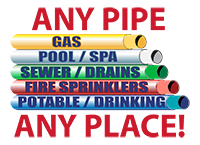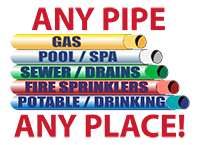Is there any sight more troubling and panic-inducing than your toilet, not flushing? Having that home fixture out of commission for an extended period of time is a nightmarish scenario. You and your family will have a harder time relaxing at home, knowing you don’t have a functioning toilet available.
Unfortunately, toilets tend to experience that specific problem from time to time, and what you can do is to learn how to handle it properly.
In this article, we’ll discuss the different possible explanations for why your toilet isn’t flushing. We’ll also talk about the solutions you can try to fix that problem.
Learn to take care of your toilet flushing issues by continuing with this article.
The Reasons Why Your Toilet Isn’t Flushing and Their Corresponding Fixes
There’s more than one potential explanation for your toilet, not flushing. As you’ll see, some are easy to fix on your own, while others may require professional assistance.
The Toilet Is Clogged
Perhaps the most likely explanation for your toilet not flushing properly is that it’s clogged.
Clogging can happen whenever someone tries to flush too much toilet paper down the bowl. A large bar of soap may also have slipped and fallen into the toilet accidentally, thus causing a clog. The accumulation of small debris over time is also a possible reason why it seems backed up.
Regardless of what the reason is for the clog, you need to fix it right away. You don’t want to deal with incomplete flushes any longer than you need to.
The Fix
Clearing out a clogged toilet is not unlike freeing up a clogged sink.
To get started, reach for your toilet plunger. Toilet plungers are somewhat different from the standard plunger because they feature a center flange that creates a tight seal over the toilet’s drain, according to The Spruce.
Keep moving the plunger straight up and down directly over the opening to work on the clog. Continue plunging, and you’ll soon feel the blockage start to clear up.
Most of the time, using a toilet plunger should be enough to get rid of a clog. Some clogs are stubborn, though, and they may not dislodge easily.
In that case, you’ll need to turn to a toilet auger instead. Toilet augers are special hand-operated tools that remove clogs while simultaneously protecting the porcelain. Because of the design, it’s easy to feed them into the toilet bowl and reach any obstruction there.
Continue feeding the toilet auger into the opening until you encounter some resistance, which is likely the clog. Try to move the auger through the clog and then pull it out afterward. Flush the toilet to see if it has returned to normal.
You may need to use the toilet auger repeatedly to completely get rid of the clog.
There’s Not Enough Water in the Toilet Tank
Toilets need a significant amount of water to execute complete flushes. If there’s not enough water in the toilet tank, you’re not getting a complete flush.
Notably, the water level in the toilet tank may become inadequate for a few reasons.
It could be because you set it that way yourself in the hopes of conserving water. The problem could also be the toilet’s components becoming misaligned. One more potential issue is the water shut-off valve accidentally being closed slightly.
The following tips listed below should help you address these issues.
The Fix
If the reason why there’s not enough water in the tank is due to a misalignment or your preference, you can fix that issue easily. Just open the tank and move the arm of the float ball upward. You can tell right away which component inside the tank is the float ball.
There’s no need to worry if the problem is the shut-off valve.
Bend down to the base of your toilet and look for a valve sticking out of the wall. That’s the shut-off valve. Turn the valve counterclockwise until it cannot move any longer to allow more water into the tank and create better flushes.
The Toilet’s Inlet Holes Are Clogged
The toilet’s inlet holes are underneath the rim of the bowl. Those small holes are responsible for helping transfer additional water into the bowl whenever the toilet is flushed. You won’t get a full flush if those inlet holes are blocked.
It’s hard to prevent those inlet holes from getting clogged because that’s a byproduct of regular toilet usage. Over time, various small particles may flow in and out of your toilet, and they could get lodged inside the inlet holes. Homes with hard water are especially susceptible to this specific issue.
The Fix
To clear out your toilet’s clogged inlet holes, you’ll need to soften up the blockages and then remove them manually.
Start by shutting off the water supply valve to your toilet and then open up the tank. You’ll see the flapper there. Open that up and let the water out.
While the flapper is still open, take a cleaning solution, and pour about two cups of it into the flush valve opening. You can use a household cleaner like white vinegar or your preferred toilet bowl cleaner.
Use a funnel to ensure the cleaner goes where it’s supposed to. If there is a spillover, make sure to clean that up as soon as possible.
You now need to wait for the cleaning solution to do its thing. Allow it to sit overnight and tell everyone to avoid using that specific toilet in the meantime.
In the morning, grab a wire hanger and use that to reach into the inlet holes. Now that the cleaning solution has gotten a chance to dissolve the blockages, the wire hanger should pass through those holes with ease.
Flush the toilet afterward and see if it’s working as expected.
Your Toilet’s Flapper Is Either Old or Not Adjusted Properly
Thus far, we’ve talked about flushing issues that you can fix even if you lack plenty of DIY experience. The next entries are a bit more complicated.
For instance, the toilet flapper can cause problems itself. When it’s working right, the toilet flapper allows the right amount of water to move from the tank to the bowl to complete a flush. When it’s not working properly, you get incomplete flushes.
Toilet flappers can fail to do their job for one of two reasons. First, it could be because the chain connected to the flapper is too loose. The other is because the flapper is too worn down.
The Fix
Open the tank again and check out the chain. It should have a pretty tight bond with the flapper. If it doesn’t, shift the chain’s position in a way that allows the connection to firm up.
A worn-down flapper is harder to address because the replacement process can be complex. This is an instance where calling a plumber to help makes a lot of sense.
The Toilet Drain Pipe Was Not Installed Correctly
Finally, the reason why you have a weak or incomplete flush could be because someone did not install your toilet properly. To be more specific, the drain pipe to your toilet may not be correct.
That pipe is supposed to help move the water faster away from the toilet bowl during flushing. It can’t if it doesn’t have the needed downward slope.
This issue is among the harder ones to detect because you’ve thought your toilet was supposed to flush that way right from day one.
The Fix
Considering all the parts that will need to be tinkered with and adjusted, you’re better off leaving this job to the experienced professionals. Call on your plumber to have the drain pipe realigned and have this issue addressed as quickly as possible.
Addressing Other Toilets Not Flushing Issues
Now, let’s turn our attention to other problems that may plague your porcelain fixture. The following are serious issues as well, and you’ll need to handle them correctly if you want to maintain a clean and orderly bathroom.
The Toilet Runs Continuously after Flushing
Incomplete flushes are troublesome, but the same holds for continuous flushes. That issue can lead to wasted water. On top of that, you could also run up your water bill needlessly.
According to SFGate, the likely issue if you’re dealing with continuous flushing is a problematic flapper. Remember that the flapper allows the appropriate amount of water into the toilet bowl. When it’s damaged, it could allow an excessive amount of water into the bowl, which is why the flush keeps going.
The Fix
Lift the lid of the toilet tank and look inside to check the components. You specifically want to look at the float arm and the flapper.
Check on how the float arm is performing by moving it around. It should move vertically with no issue and allow the flapper to slide into position whenever the toilet is flushed. If the float arm isn’t moving along the right trajectory, adjust the float arm as needed to give the flapper enough room to work.
The issue could also have nothing to do with the float arm and may solely be about the flapper. An old flapper may not create the seal needed to keep excess water from pouring into the bowl. You’ll need to replace that if you want your toilet to return to normal.
The Water inside the Toilet Is Overflowing
A toilet that is flushing continuously is annoying and wasteful. A toilet that is not flushing at all is concerning and inconvenient. Still, those issues are nothing compared to the dread induced by an overflowing toilet.
The sight of an overflowing toilet is a nightmare for many homeowners and avoided at all costs. The thing about overflowing toilets is that they are common.
Toilets typically overflow due in part to a combination of clogging and a faulty flapper. Thankfully, resolving this issue is not that hard.
The Fix
To stop the toilet from overflowing any further, you first need to stop additional water from going into the toilet bowl. Go into the toilet tank and locate the flapper valve. Press down on that flapper valve to slow down the movement of water.
After working on the flapper valve, you can now adjust the float. Lift it up to stop any water from getting into the toilet bowl.
Adjusting the flapper valve and float should regulate the water level in the toilet bowl and stop the overflow. If working on the flapper valve and float doesn’t work, you can also go to the back of the toilet and shut off the valve there.
Now that the water level inside the bowl is back to normal, you can work on unclogging it. Grab your toilet plunger and align it properly over the opening. Proceed to plunge a few times to free up the clog.
If plunging is not doing enough to remove the clog, move to using the toilet auger instead. The toilet auger should get rid of any blockages that withstand the plunger.
If The Problem Persists, Call San Diego Plumbing And Pipelining Experts For Help Today!
But what if the clogging persists even after using the plunger and toilet auger? That likely means the obstruction is lodged deeper into your plumbing. Your only move at that point is to call a plumber.
Issues with improper flushing are among the most stressful to handle for homeowners. Don’t hesitate to call for assistance if you’re having a tough time addressing the problem. Contact us at San Diego Plumbing & Pipelining and allow us to get your toilet back in order.








